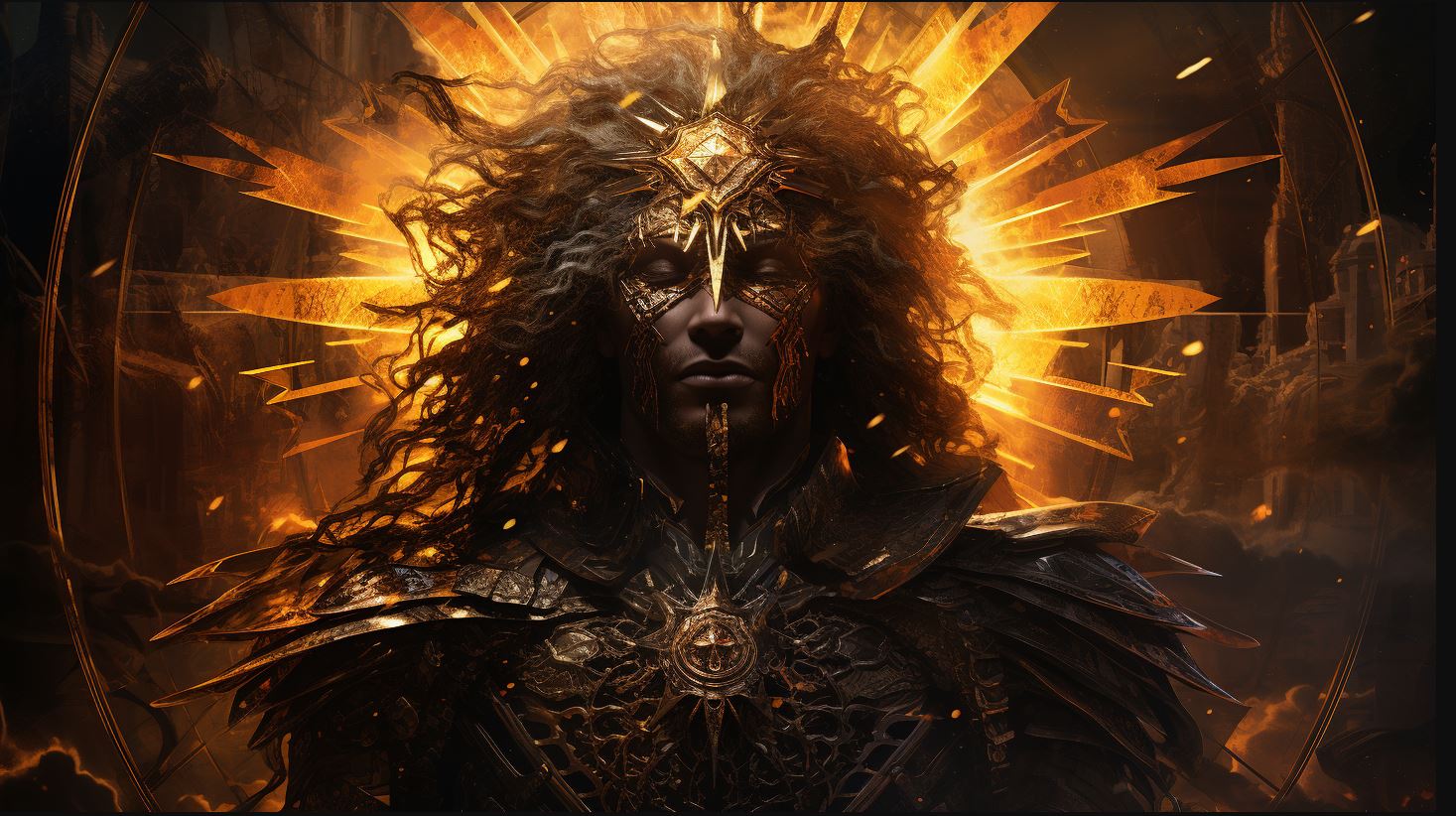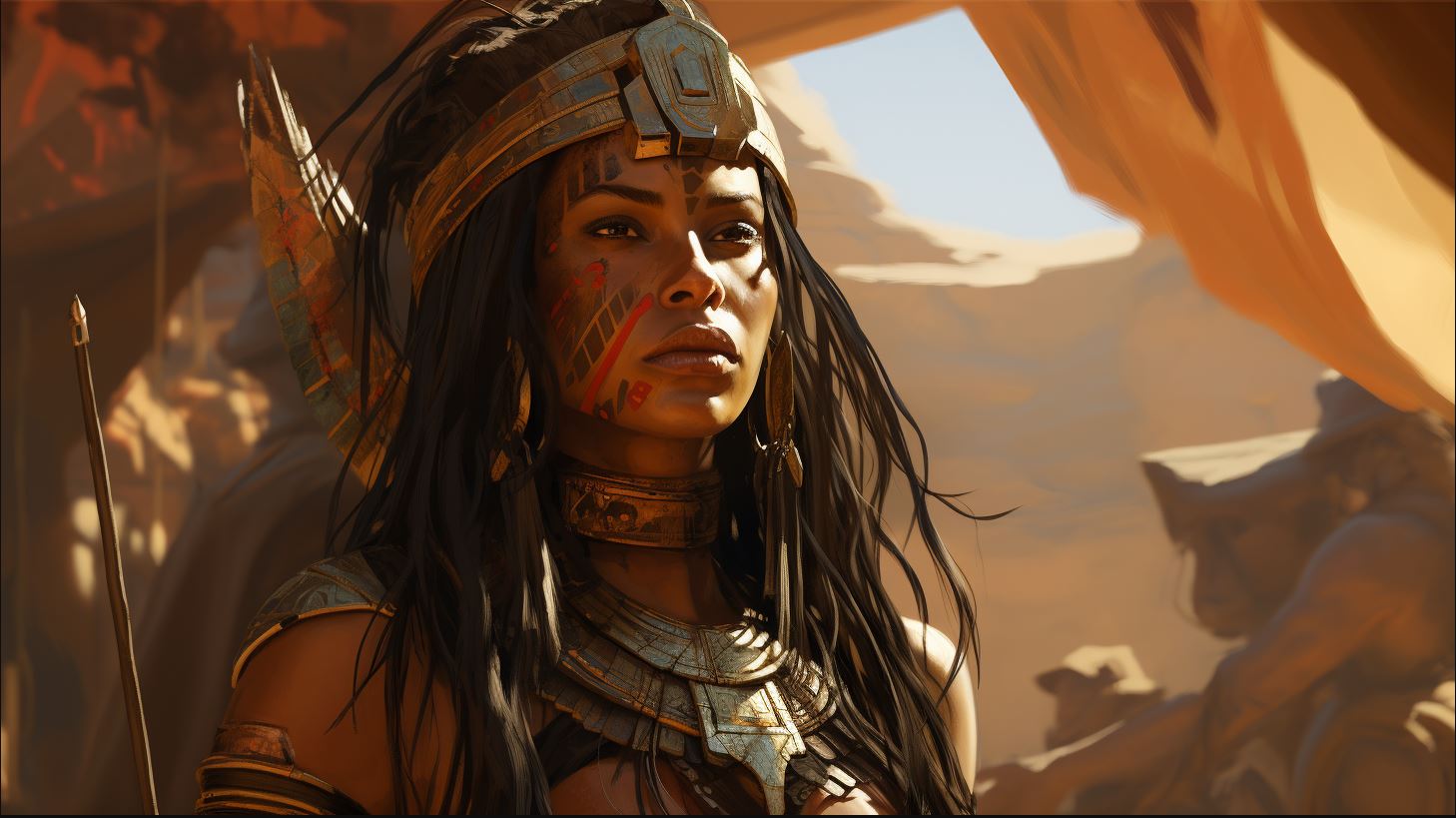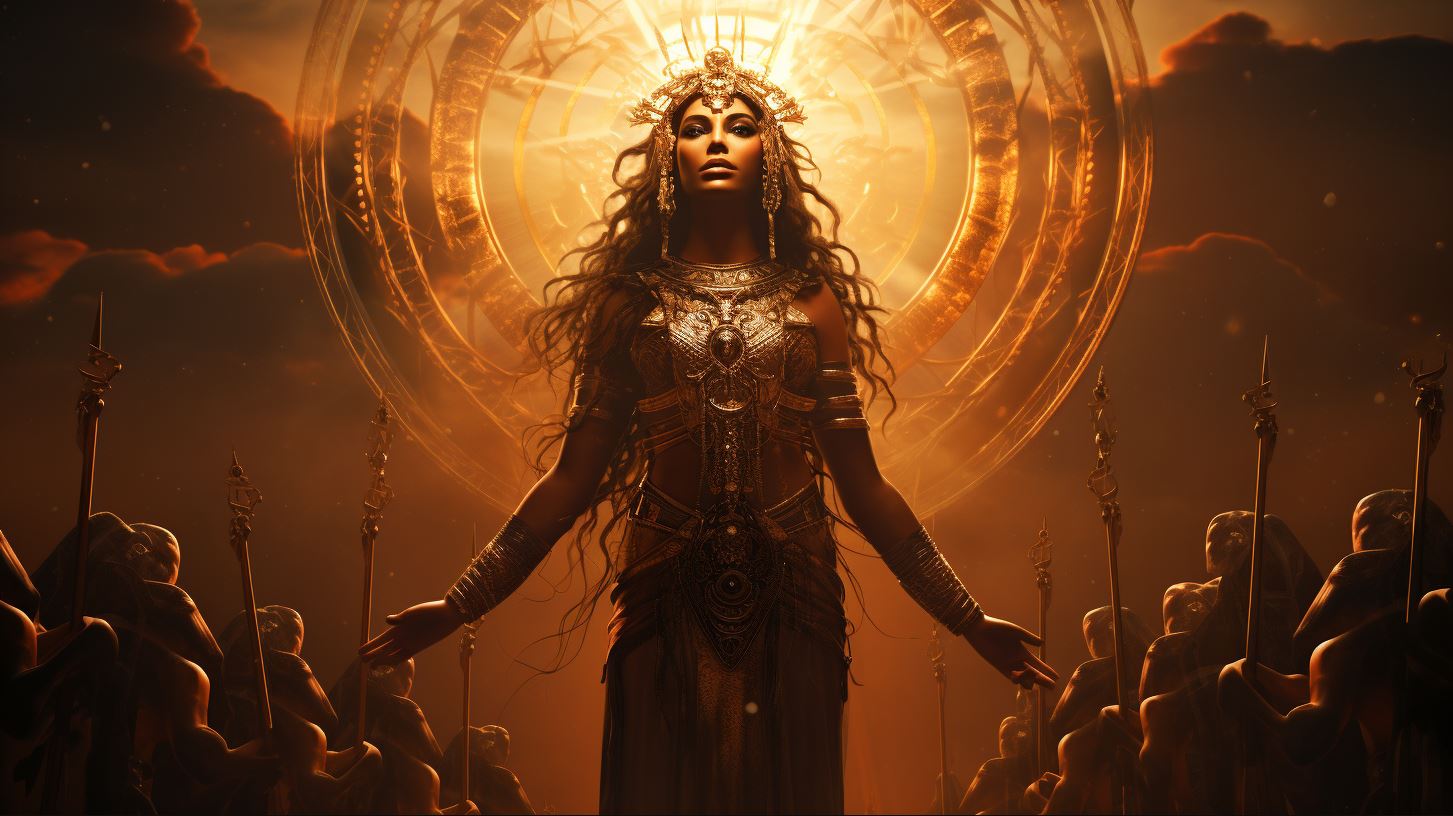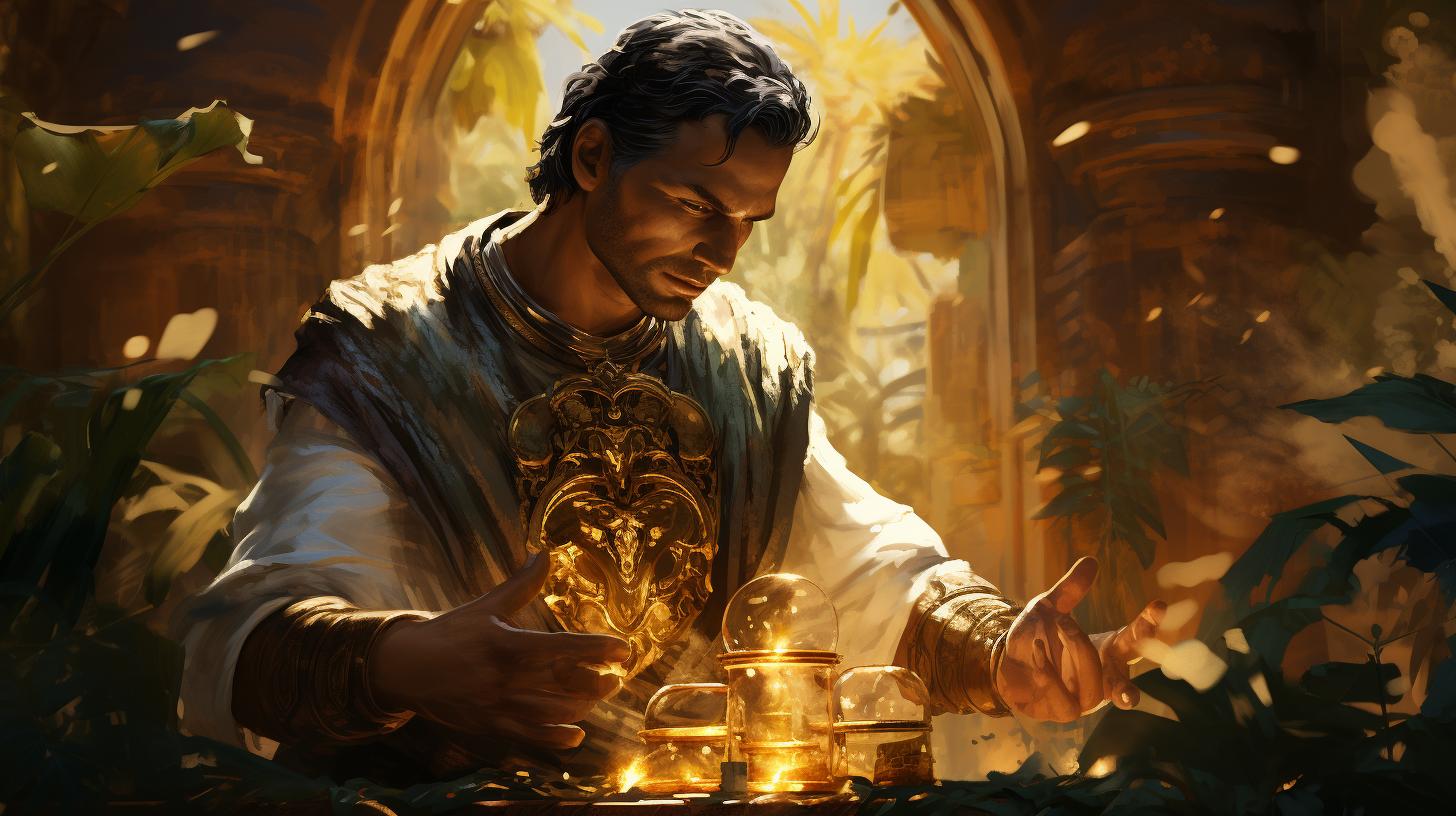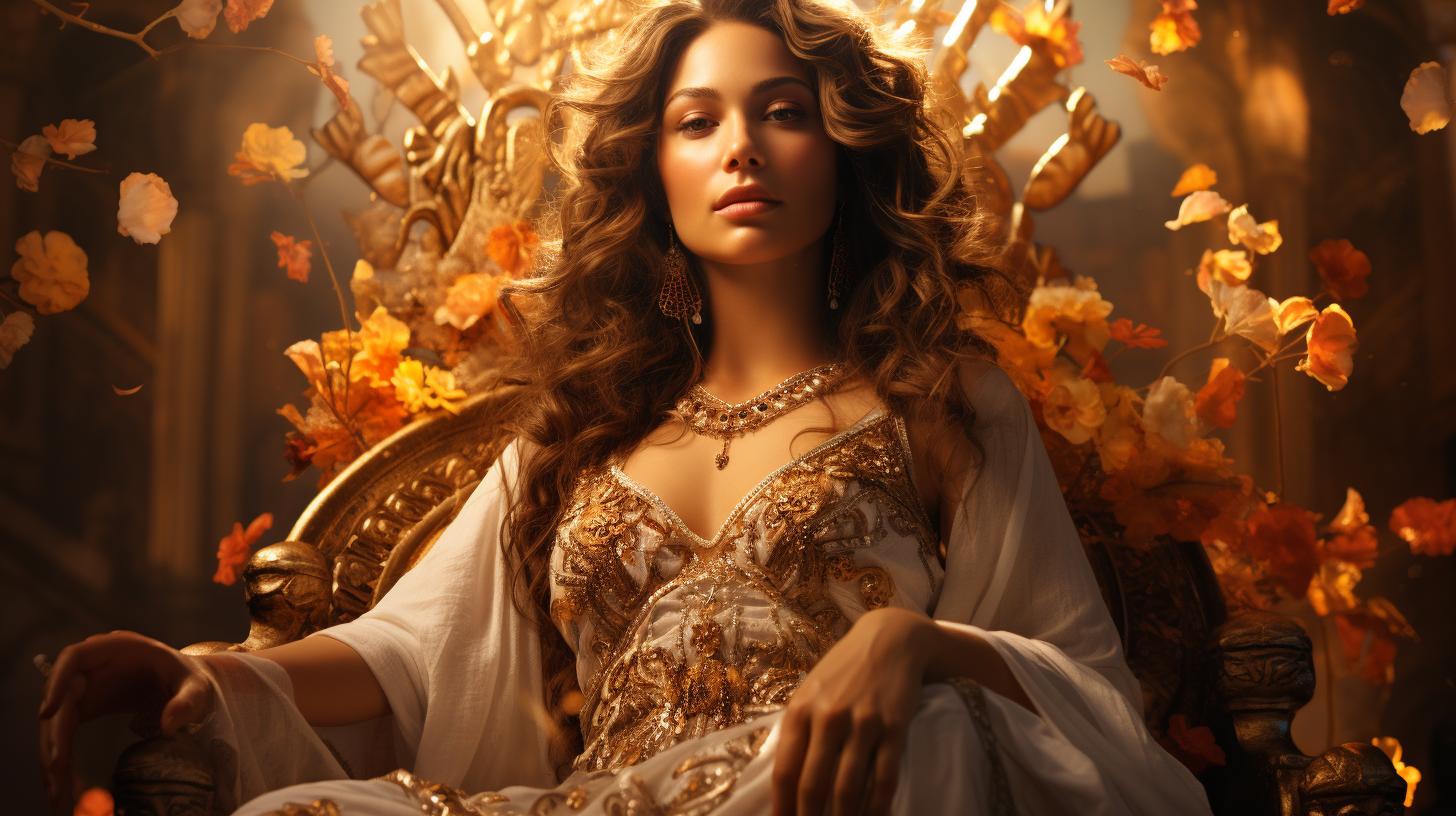Discover the Mysteries of Arsay Goddess: Unveiling the Secrets of this Ancient Ugaritic Deity
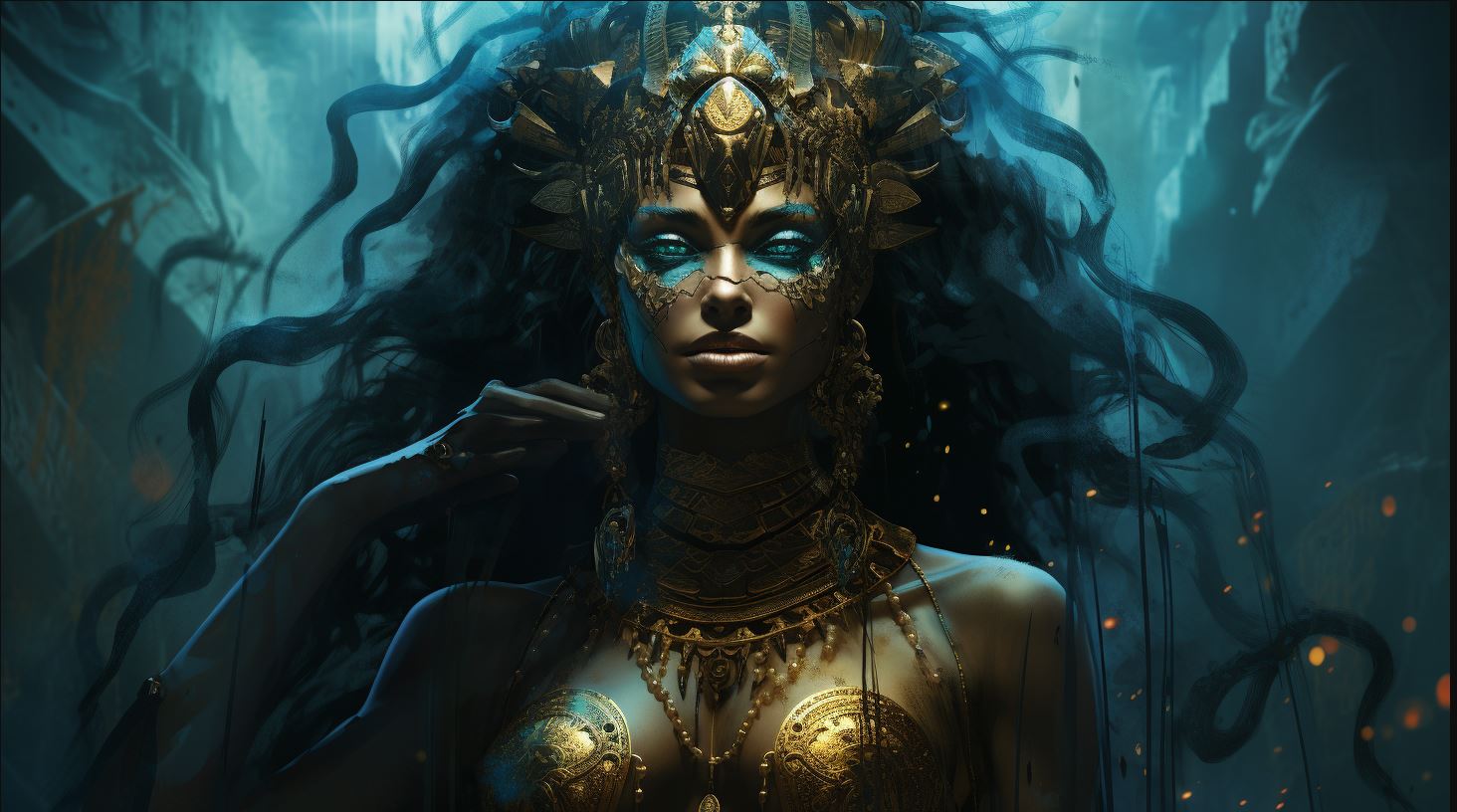
Arsay goddess, a significant deity in Ugaritic mythology, has intrigued scholars for centuries. Her exact position in the Ugaritic pantheon and her role in their religion remain uncertain. Some theories suggest associations with the underworld or subterranean water.
Arsay, believed to be the daughter of the god Baal, is mentioned alongside Pidray and Tallay in the Epic of Baal, leading to further academic investigations. Although details about their connections are scarce, these goddesses have captivated researchers seeking to uncover the ancient cult of Arsay and shed light on their significance in Ugaritic texts.
The Role of Arsay in Ugaritic Mythology
The mysteries surrounding Arsay goddess have fascinated scholars for centuries, as her exact position and significance within Ugaritic mythology remain enigmatic. In this section, we will delve into the various aspects of Arsay’s role, exploring her position in the Ugaritic pantheon, possible associations with the underworld and groundwater, and her relationship with Baal and her sisters.
Arsay’s Position in the Ugaritic Pantheon
Within the complex pantheon of Ugaritic gods and goddesses, Arsay’s exact status and position are still a subject of debate. While some theories suggest her prominence as a daughter of Baal, others propose alternative interpretations.
Further research is necessary to determine her precise role and hierarchy within the Ugaritic divine order.
Possible Associations with the Underworld and Groundwater
One prevailing theory surrounding Arsay suggests her association with the realms of the underworld or subterranean water. It is plausible that she symbolized an aspect of the Ugaritic cosmology related to the mysteries of the subterranean world or the hidden waters beneath the earth.
However, deciphering the exact nature of this connection requires a careful analysis of available Ugaritic texts and comparative mythology.
Arsay’s Relationship with Baal and Her Sisters
In the Epic of Baal, Arsay is often mentioned alongside her sisters Pidray and Tallay. The exact nature of their relationship, whether as siblings or wives of Baal, remains uncertain.
These deities, mentioned alongside Arsay in the Epic of Baal, have sparked considerable interest among scholars seeking to decipher their significance within the Ugaritic pantheon.
Exploring the Roles and Connections of Pidray and Tallay
Pidray and Tallay’s positions and functions in Ugaritic mythology are shrouded in mystery.
Their relationship with Arsay further deepens the enigma surrounding these figures. While the exact nature of their connection remains uncertain, many theories attempt to shed light on their roles and meanings within the Ugaritic religious context.
Some researchers suggest that Pidray and Tallay could be daughters of the prominent deity Baal Hadad, known as the storm god. This interpretation aligns with their close association with Arsay, who is believed to be Baal’s daughter.
However, in-depth analysis and textual evidence are required to unravel the true nature of their relationship.
Comparisons with Other Ugaritic Deities and Allatum of Akkad
When examining the significance of Pidray and Tallay, it is crucial to consider their connections with other Ugaritic deities as well as their potential parallels with deities from other ancient civilizations.
For instance, scholars have drawn comparisons between Tallay, the goddess of dew, and her role as a life-bringer to similar deities found in Mesopotamian and Canaanite mythologies.
Additionally, intriguing similarities arise between Pidray and the Akkadian goddess Allatum, who is associated with the Mesopotamian god Nergal.
These connections suggest potential cross-cultural influences and provide valuable insights into the broader religious traditions of the ancient Near East.
By examining the characteristics, relationships, and potential shared attributes of Pidray and Tallay with other deities, scholars strive to deepen our understanding of these enigmatic Ugaritic figures and their significance within the complex tapestry of Ugaritic mythology.
The Ancient Cult of Arsay Goddess
The ancient cult of Arsay Goddess offers a fascinating glimpse into the religious practices and beliefs of Ugaritic civilization. This section delves into the rituals and beliefs surrounding Arsay’s worship, as well as exploring her power and positive attributes as a deity.
The worship of Arsay Goddess involved a variety of rituals and ceremonies that were central to Ugaritic religious life. Followers believed in the divine power and presence of Arsay, offering their devotion through distinctive practices.
These prayers reflected the belief in Arsay’s ability to bring blessings and fertility.
These celebrations aimed to strengthen the bond between Arsay and her followers.
Arsay’s Power and Positive Attributes as a Deity
Arsay Goddess held a significant position in the Ugaritic pantheon, revered for her power and blessings. She was associated with several positive attributes that shaped the collective perception of worshippers.
- Fertility and Abundance: Arsay was believed to possess the ability to bless the land with fertility, ensuring abundant harvests and agricultural prosperity.
Farmers and cultivators sought her benevolence for favorable growing conditions.
- Protection and Guidance: Arsay was also considered a protective deity, guarding her devotees against malevolent forces and offering guidance in times of need.
Her followers sought her divine intervention for shelter and security.
- Connection to the Underworld: Some interpretations suggest that Arsay had connections to the realm of the underworld, symbolizing the cycle of life, death, and rebirth.
This aspect connected her to the mysteries of the afterlife and the forces of nature.
In summary, the ancient cult of Arsay Goddess in Ugarit revolved around rituals and beliefs specifically tailored to honor this enigmatic deity.
Through prayers, offerings, and celebrations, worshippers sought her favor and protection, benefiting from her associations with fertility, protection, and connections to the underworld.
Debates and Interpretations of Arsay, Pidray, and Tallay
Exploring the intertwined narratives of Arsay, Pidray, and Tallay has ignited scholarly debates regarding their roles and relationships within the Ugaritic pantheon.
This section delves into these discussions, touching upon theories and interpretations that shed light on their status as daughters or wives of Baal.
Examining Theories on Their Status as Daughters or Wives of Baal
One captivating aspect of Arsay, Pidray, and Tallay lies in their connection to Baal Hadad.
Scholars grapple with determining whether they should be understood as his daughters or wives. While some propose their filial relationship with Baal, others argue for their status as his consorts.
The implications of their familial or marital connections ripple through interpretations, influencing the perception of their roles and influence within Ugaritic mythology.
Insights into Tallay as the Goddess of Dew
Focusing on Tallay, the Ugaritic goddess associated with dew, we uncover intriguing insights into her domain and significance. The imagery of dew, which nourishes the earth and enlivens vegetation, may symbolize renewal and abundance tied to Tallay’s role within the pantheon.
Interpretations of Tallay’s presence between the eyes of Hadad suggest a close relationship and her intimate involvement in his life, possibly representing her role as the provider of life-sustaining dew.
Exploring Different Interpretations of Pidray’s Name
Pidray, the enigmatic goddess of Ugarit, intrigues researchers seeking to unravel the mysteries behind her name.
Various interpretations have emerged, each offering a unique perspective on her nature and significance within the divine realm.
Explorations into linguistic roots and potential associations have led to theories connecting Pidray’s name to concepts such as fertility, abundance, or even sacred marriage rites.
These interpretations invite further contemplation and added depth to the understanding of this enigmatic Ugaritic deity.
In conclusion, the debates surrounding Arsay, Pidray, and Tallay contribute to the ongoing exploration and interpretation of Ugaritic mythology.
Their status, associations, and significance within the pantheon remain subjects of scholarly fascination, inviting further research and perspectives.
…












